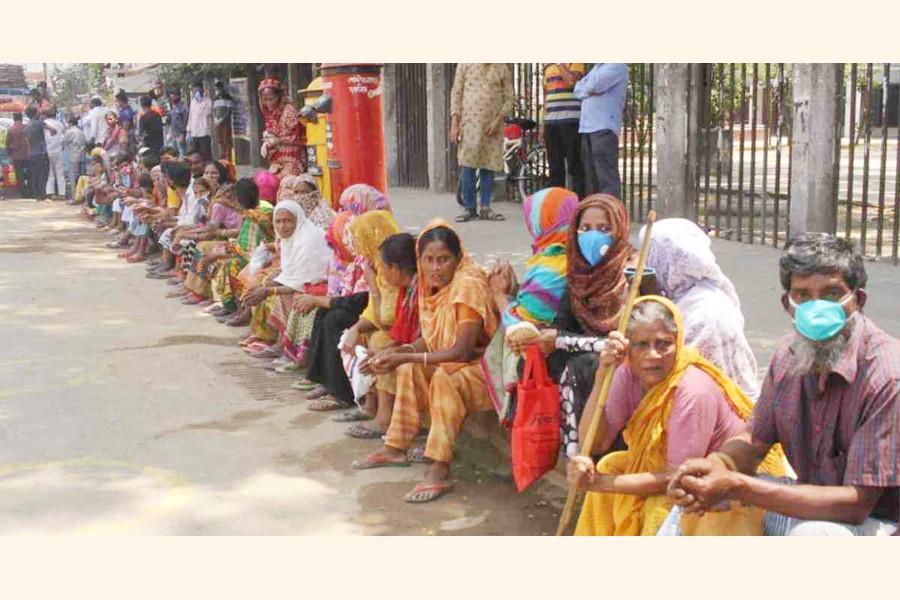The number of people, who have entered into poverty amid Covid-19 restrictions, has increased between March and August this year, reveals a recent survey.
Accordingly, 32.4 million people or almost 20 per cent of the country’s population, belong to the category of new poor. The number was 24.5 million in March.
Income dropped by 18 per cent in urban slums and 15 per cent in villages from the levels in March this year, revealed the survey styled ‘PPRC-BIGD Rapid Research Response Phase IV Findings, Part II: Trends in COVID Impact on Livelihood, Coping, and Recovery’.
Based on the findings, the survey pointed out a new reversal in the recovery trend.
“We need to unpack recovery and resilience. We find that the mechanisms of recovery and resilience adopted by many, especially the new poor is what we call ‘distressed’ and has the risk of deepening long term poverty and vulnerabilities,” said Imran Matin, Executive Director, BIGD, at the launching of the report.
“We need to pay urgent attention to these regressive reversals,” he added.
Even among the households surveyed in urban and rural areas, poverty rose by 17 percentage points from the pre-Covid level.
Two-thirds of the households – a total of 4,872 – in rural and urban areas in the group were in poverty as of August 2021, found the survey.
It said the majority of the respondents agreed that the latest lockdown was a good decision, but almost half mentioned about livelihoods crisis the lockdown brought for them. Forty-five per cent of households received some relief during the first lockdown compared to only 23 per cent during the latest lockdown.
“Covid response fundamentally is also a question of social justice, he said, adding that the country cannot simply leave the less well-off groups to fend for themselves with a token or no policy support,” said Dr Hossain Zillur Rahman, PPRC Executive Chairman and former caretaker government adviser.
He pointed out that without an integrated approach combining health, administrative and economic policies, recovery disruptions cannot be minimised.
Many of the 'new poor' households seem to have fallen into longer-term poverty, according to the survey.
It added that at least 29 per cent of the households with income above the poverty line in the sample became poor as soon as the pandemic hit and could not manage to get out of poverty since then. “This is grave news as longer-term poverty can erode the resilience of these families and put them in a poverty trap,” observed the survey report.


